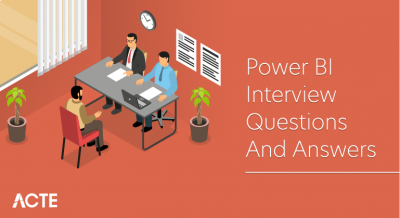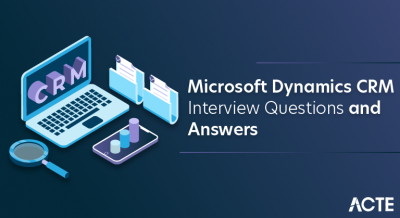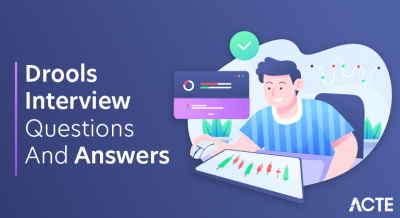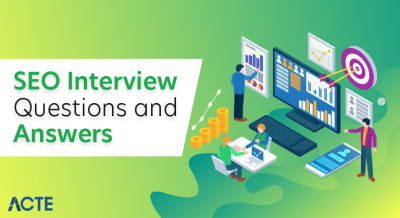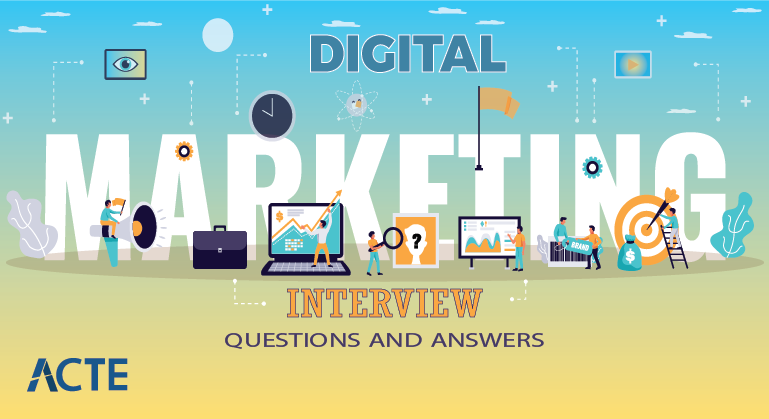
Digital marketing is a comprehensive and ever-evolving approach to promoting businesses, products, or services in the digital realm. It encompasses a wide range of strategies and techniques that leverage online channels and technology to engage target audiences. From optimizing websites for search engines (SEO) and creating compelling content to running social media campaigns, email marketing, and paid advertising, digital marketing offers a diverse toolkit for reaching and connecting with customers. One of its key advantages is the ability to target specific demographics and measure performance through analytics tools, providing valuable insights for strategy refinement.
1. What is the Google Ads Quality Score, and how does it affect campaign performance?
Ans:
The Google Ads Quality Score is a metric that evaluates the quality and relevance of your ads, keywords, and landing pages. It affects campaign performance by influencing ad position and costs. A higher Quality Score may result in more advantageous ad placement and cheaper clickthrough rates.
2. How can you optimize a website for search engines?
Ans:
Website optimization for search engines involves various techniques, including keyword research, on-page optimization, improving site speed, creating high-quality content, optimizing meta tags, and acquiring authoritative backlinks.
3. What are the key components of a successful content marketing strategy?
Ans:
Key components include audience research, content planning, creation of valuable content, effective distribution, and measurement of performance to refine future efforts.
4. What is the significance of backlinks in SEO?
Ans:
Backlinks are important in SEO because they act as “votes of confidence” from other websites. High-quality backlinks signal to search engines that your content is valuable and authoritative, potentially improving your search rankings.
5. Describe the concept of a sales funnel in digital marketing.
Ans:
A sales funnel is a framework that represents the customer journey, from initial awareness to making a purchase. It typically includes stages like awareness, consideration, and decision, with the goal of guiding potential customers through each stage.
6. How do you measure the success of an email marketing campaign?
Ans:
Email campaign success is measured through key metrics like open rates, click-through rates, conversion rates, and return on investment (ROI).
7. What are the advantages of using social media for marketing purposes?
Ans:
Advantages of social media marketing include reaching a broad audience, targeting specific demographics, cost-effectiveness, engaging with customers, and building relationships.
8.What is A/B testing, and how can it be applied in digital marketing?
Ans:
A/B testing involves comparing two versions (A and B) of content to determine which one performs better. In digital marketing, it’s used to optimize elements like emails, landing pages, ads, and websites to improve conversion rates and user experience.
9. Explain the term “CTR” in the context of online advertising.
Ans:
CTR, or Click-Through Rate, is a metric that measures the percentage of people who click on an ad or link after seeing it. It’s calculated by dividing the number of clicks by the number of impressions and is used to assess ad performance.
10. What is the importance of landing pages in a digital marketing campaign?
Ans:
Landing pages are crucial because they provide a focused and specific destination for visitors who click on an ad or link. They are designed to convert visitors into customers by offering relevant information and a clear call to
11. How can you improve the loading speed of a website for better user experience and SEO?
Ans:
To improve website loading speed, you can compress images, minify code, leverage browser caching, reduce server response times, use a Content Delivery Network (CDN), and optimize code and scripts. Faster loading speeds improve user experience and can positively impact SEO by reducing bounce rates and increasing organic rankings.
12. What are the key factors to consider when targeting a specific audience in digital marketing?
Ans:
When targeting a specific audience, consider demographics, psychographics, geographic location, behavior, interests, and the platforms they use. Define buyer personas and tailor your content, channels, and messaging accordingly.
13. Describe the concept of influencer marketing.
Ans:
Influencer marketing involves collaborating with individuals who have a strong and engaged online following to promote products or services. Influencers have credibility with their audience, which can be leveraged for marketing campaigns.
14. What is the role of a call-to-action (CTA) in digital marketing?
Ans:
A Call-to-Action (CTA) is a prompt or button that encourages the audience to take a specific action, such as making a purchase, signing up for a newsletter, or contacting the company. CTAs guide users through the conversion funnel and drive desired actions.
15. How can you measure the ROI of a digital marketing campaign?
Ans:
ROI (Return on Investment) in digital marketing can be measured by comparing the cost of the campaign to the revenue or leads generated. You can use various tools and analytics to track conversions, sales, and customer acquisition cost to calculate ROI.
16. What are the main objectives of a social media marketing strategy?
Ans:
The main objectives of a social media marketing strategy include increasing brand awareness, engaging with the target audience, driving website traffic, generating leads or sales, and building a community around the brand.
17. Explain the difference between on-page and off-page SEO optimization.
Ans:
| Aspect | On-Page SEO Optimization | Off-Page SEO Optimization | |
| Definition | Refers to actions taken directly on the website to improve its search engine visibility and user experience. | Relates to external activities and signals that impact a website’s authority, credibility, and rankings. | |
| Examples | Keyword optimization, content quality, meta tags, URL structure, internal linking, mobile-friendliness. | Backlink building, social signals, guest blogging, influencer outreach, online reputation management. | |
| Control | Within the control of the website owner and webmaster. | Somewhat within the control of the website owner but also depends on external factors. | |
| Objective |
Enhancing the website’s content, structure, and user experience to make it more search engine-friendly. |
Building the website’s credibility and authority through external factors to improve its search rankings. | |
Impact on Rankings |
Directly influences search engine rankings, as it involves optimizing the website’s individual pages. |
Indirectly affects rankings by enhancing the website’s overall online presence and reputation. |
18. Describe the concept of pay-per-click (PPC) advertising.
Ans:
PPC advertising is a model where advertisers pay a fee each time their ad is clicked. It’s commonly used in search engine advertising, where ads appear above or below search results. Popular platforms for PPC include Google Ads and Bing Ads.
19. How can you handle a negative review or comment on social media?
Ans:
Respond promptly and professionally, addressing the issue and offering a solution. Avoid getting defensive, and take the conversation offline if necessary. Turn a negative experience into a positive one whenever possible.
20. What are the best practices for optimizing a website for mobile devices?
Ans:
Best practices include responsive web design, mobile-friendly layouts, optimizing images and videos for mobile, reducing page load times, and ensuring easy navigation on smaller screens.
21. How does email segmentation contribute to the effectiveness of email marketing?
Ans:
Email segmentation involves dividing your email list into smaller, targeted groups based on demographics, behavior, or preferences. It allows you to send more relevant and personalized content to subscribers, leading to higher engagement and conversion rates.
22. What is the Google Search Console, and why is it important for SEO?
Ans:
A free tool called Google Search Console offers information on how well a website performs in Google search results. It helps webmasters monitor search traffic, discover and fix issues, and improve a site’s visibility in search engine results pages (SERPs).
23. Explain the differences between SEO and SMM.
Ans:
| Aspect | SEO (Search Engine Optimization) | SMM (Social Media Marketing) |
| Definition | SEO is the practice of optimizing a website to improve its visibility in search engine results (e.g., Google) and drive organic (non-paid) traffic to the site. | SMM involves using social media platforms (e.g., Facebook, Twitter, Instagram) to promote products, services, or content, engage with the audience, and drive traffic or conversions. |
| Focus | Focuses on optimizing on-page and off-page elements of a website to rank higher in search engine results pages (SERPs). | Focuses on creating and sharing content on social media platforms to build brand presence, interact with followers, and drive engagement and conversions. |
| Channels | Primarily concerned with search engines like Google, Bing, and Yahoo. | Primarily utilizes social media platforms such as Facebook, Twitter, Instagram, LinkedIn, etc. |
| Goals |
The main goal is to increase organic traffic, improve search rankings, and enhance website visibility to a broad audience. |
The main goal is to engage with the target audience, build brand awareness, drive traffic, and promote products or services through social channels. |
| Strategies |
Involves on-page optimization (e.g., keyword research, meta tags, content quality) and off-page optimization (e.g., backlinks, authority building). |
Involves content creation, social posting, engagement, paid advertising, influencer collaborations, and community building. |
24. How do you perform keyword research for SEO and SEM campaigns?
Ans:
Keyword research involves identifying relevant keywords or phrases that potential customers might use when searching. Tools like Google Keyword Planner, SEMrush, or Ahrefs can help you discover keywords with search volume, competition, and relevance to your content.
25. What is the importance of responsive web design in digital marketing?
Ans:
A website’s ability to adjust to various screen sizes and devices is ensured by responsive web design. It’s important in digital marketing because it improves user experience, enhances SEO rankings (Google prefers mobile-friendly sites), and helps in reaching a wider audience.
26. How can you use Google Analytics to track website traffic and user behavior?
Ans:
Google Analytics allows you to track metrics such as page views, bounce rates, time on page, and user demographics. You can use it to analyze user behavior, measure the success of marketing efforts, and make data-driven decisions to optimize your website and campaigns.
27. Explain the concept of “remarketing” in online advertising.
Ans:
Remarketing, also known as retargeting, is a digital advertising strategy that involves targeting ads at users who have previously interacted with a website or app but didn’t complete a desired action. It aims to re-engage these users and encourage them to convert by displaying relevant ads based on their past behavior.
28. What are the key performance indicators (KPIs) for measuring social media marketing success?
Ans:
Key performance indicators for social media marketing include metrics like engagement rate, reach, conversion rate, click-through rate, follower growth, and return on investment (ROI).
29. How can you optimize website content for voice search?
Ans:
To optimize for voice search, focus on natural, conversational language, long-tail keywords, and providing concise answers to common questions. Structuring content with featured snippets in mind can also help.
30. What is the role of meta tags in on-page SEO?
Ans:
Meta tags provide information about a web page’s content to search engines and users. They include the title tag (title of the page) and meta description (a brief summary). Optimizing these tags can improve click-through rates and SEO.
31. Describe the concept of affiliate marketing and its benefits.
Ans:
A performance-based marketing strategy called affiliate marketing pays partners (affiliates) for bringing customers to a company’s website or generating sales there. Benefits include cost-effectiveness, broader reach, and only paying for actual results.
32. How can you create compelling and shareable content for social media?
Ans:
Create content that is relevant to your audience, tells a story, evokes emotion, provides value, and is visually appealing. Encourage engagement through questions, polls, and sharing user-generated content.
33. What is the difference between organic and paid social media reach?
Ans:
Organic reach is the number of users who see your social media posts without any paid promotion, while paid reach involves promoting posts to a larger, targeted audience through advertising.
34. How do you choose the right social media platforms for a specific business?
Ans:
Consider your target audience, industry, and business goals. Choose platforms that align with your audience’s demographics and preferences, as well as those where you can effectively communicate your brand message.

35. Explain the significance of local SEO for businesses with physical locations.
Ans:
Local SEO focuses on optimizing a website for local search queries, making it vital for businesses with physical locations. It helps improve visibility in local search results, driving foot traffic and online conversions.
36. What is the role of a chatbot in digital marketing and customer service?
Ans:
Chatbots are automated tools that provide immediate responses to customer queries. They can assist with customer support, lead generation, and enhancing user experience, ensuring quick, consistent interactions with users.
37. How can you improve email deliverability rates in email marketing?
Ans:
To improve email deliverability, use double opt-ins, maintain a clean email list, send relevant and engaging content, use a reputable email service provider, authenticate your domain with SPF and DKIM records, and monitor email engagement and sender reputation.
38. What are the main elements of a well-optimized Google My Business profile?
Ans:
Key elements include accurate business information, high-quality images, a detailed business description, customer reviews and ratings, business categories, and consistent NAP (Name, Address, Phone number) data.
39. How can you use Google AdWords to target specific keywords and audiences?
Ans:
You can use Google AdWords (now Google Ads) to target specific keywords and audiences by selecting relevant keywords for your ads and using targeting options such as location, demographics, interests, and remarketing lists.
40. Describe the importance of link building in off-page SEO.
Ans:
Link building is vital in off-page SEO because it helps establish a website’s authority and credibility. High-quality backlinks from reputable websites signal to search engines that your content is valuable, improving search rankings.
41. How do you determine the ideal frequency for posting on social media?
Ans:
The ideal posting frequency depends on your audience, platform, and content. Striking a balance between being active and not annoying your followers is crucial. Testing and analyzing engagement metrics can help you find the right frequency.
42. What is the role of user-generated content in a content marketing strategy?
Ans:
User-generated content refers to any content, such as text, images, or videos, that is generated and shared by the customers or users of a product, service, or platform. It can be leveraged in a content marketing strategy to build trust, showcase real experiences, and encourage engagement. It often serves as social proof and can be highly authentic.
43. How can you prevent duplicate content issues on a website for SEO?
Ans:
To prevent duplicate content issues, use canonical tags to specify the preferred version of a page, avoid boilerplate text, ensure consistent URL structure, and use 301 redirects when necessary.
44. Explain the concept of cost-per-acquisition (CPA) in online advertising.
Ans:
CPA is a metric that measures the cost of acquiring a new customer or lead through online advertising. It’s calculated by dividing the total advertising costs by the number of conversions.
45. What are the best practices for creating engaging and effective email subject lines?
Ans:
Effective email subject lines are concise, relevant, and convey a sense of urgency or curiosity. Personalization, using action-oriented language, and avoiding spammy words are also best practices.
46. How can you use social media advertising to target a specific demographic?
Ans:
Social media advertising platforms offer robust targeting options. You can define your target demographic by factors like age, gender, location, interests, behaviors, and more, ensuring your ads reach the right audience.
47. What is the significance of schema markup for SEO?
Ans:
Schema markup is a structured data vocabulary that helps search engines understand the content of web pages. It enhances the search engine results pages (SERPs) by providing rich snippets, which can improve click-through rates and user experience, as well as providing context to search engines.
48. Describe the steps in developing a comprehensive social media content calendar.
Ans:
Steps include identifying goals, understanding your audience, choosing platforms, brainstorming content ideas, creating a content schedule, assigning responsibilities, and tracking and evaluating results.
49. How can you monitor and manage online reputation for a brand or company?
Ans:
To manage your online reputation effectively, you can use tools like Google Alerts and social media monitoring software. Be sure to respond promptly and courteously to both favorable and unfavorable comments. Encourage happy customers to leave positive reviews, and address any concerns or criticisms in a constructive and professional manner.
50. What is the role of data analytics in digital marketing decision-making?
Ans:
Data analytics helps digital marketers make informed decisions by providing insights into campaign performance, user behavior, and ROI. It allows for data-driven adjustments and optimizations in real-time.
51. How can you leverage user personas in a content marketing strategy?
Ans:
User personas are semi-fictional profiles representing your ideal customers. They help tailor content to meet specific needs, preferences, and pain points of your target audience, resulting in more relevant and engaging content.
52. Explain the concept of responsive email design.
Ans:
Responsive email design is an approach to creating emails that adapt to the screen size of the recipient’s device, ensuring they are easily readable and navigable on both desktop and mobile devices.
53. What is the impact of page load time on SEO and user experience?
Ans:
Page load time has a significant impact on both SEO and user experience. Faster-loading pages rank higher in search results, reduce bounce rates, and improve user satisfaction, while slow-loading pages can have the opposite effect.
54. How do you perform a competitive analysis in digital marketing?
Ans:
Competitive analysis involves researching and evaluating the digital strategies of your competitors. It includes assessing their SEO efforts, content marketing, social media presence, paid advertising, and other online activities to identify opportunities and threats.
55. Describe the importance of a content distribution strategy.
Ans:
A content distribution strategy ensures that your content reaches the right audience through the appropriate channels. It maximizes the value of your content, increases its visibility, and drives more traffic and engagement.
56. What is the role of social media listening and monitoring in brand management?
Ans:
Social media listening and monitoring involve tracking brand mentions, comments, and conversations across social platforms. This helps in understanding customer sentiment, addressing concerns, and protecting and enhancing brand reputation.
57. How can you use influencer marketing to expand a brand’s reach?
Ans:
Influencer marketing is a strategy where you partner with individuals who have a significant and engaged online audience to promote your products or services. By partnering with influencers relevant to your niche, you can leverage their reach and credibility to promote your brand, expand your audience, and drive engagement and sales.
58. What is the difference between inbound and outbound marketing?
Ans:
Inbound marketing focuses on attracting potential customers through content marketing, SEO, and social media. Outbound marketing involves reaching out to potential customers through traditional advertising methods like cold calls and direct mail.
59. Explain the concept of social media engagement and its metrics.
Ans:
Social media engagement refers to interactions between users and a brand’s content on social platforms. Metrics in this context encompass activities like receiving likes, comments, shares, and click-through rates. A high level of engagement signifies that the content is connecting well with the audience.
60. How can you use Google Analytics to track conversion goals and e-commerce data?
Ans:
Set up conversion goals in Google Analytics to track specific actions on your website, such as form submissions or purchases. For e-commerce data, enable e-commerce tracking to monitor transactions, revenue, and product performance.
61. What are the key elements of an effective email marketing automation strategy?
Ans:
Key elements include segmenting the audience, creating automated email workflows, personalizing content, setting triggers for emails, nurturing leads, and analyzing performance to refine and optimize the strategy.
62. Describe the significance of long-tail keywords in SEO.
Ans:
Long-tail keywords are more specific and have lower search volume than short-tail keywords. They are valuable for SEO because they can help you target a highly relevant, niche audience and improve the chances of ranking well in search results.
63. How do you perform a website SEO audit?
Ans:
A website SEO audit involves examining on-page and off-page factors that affect search rankings. This includes checking for technical issues, assessing content quality, analyzing backlinks, and ensuring proper optimization.
64. What is the importance of responsive email design?
Ans:
Responsive email design ensures that emails display correctly on different devices and screen sizes, improving the user experience and increasing the chances of email opens and conversions.
65. How can you create compelling visual content for social media?
Ans:
Create visually appealing content by using high-quality images, videos, infographics, and graphic design tools. Ensure content aligns with your brand, tells a story, and evokes emotion, making it shareable and engaging.
66. What is the role of storytelling in content marketing?
Ans:
Storytelling in content marketing helps build a connection with the audience. It engages readers, communicates the brand’s values and mission, and makes content memorable and relatable, which can lead to increased engagement and loyalty.
67. Explain the concept of GDPR and its implications for digital marketing.
Ans:
GDPR (General Data Protection Regulation) is a European Union regulation that focuses on data privacy and protection. Its implications for digital marketing include stricter consent requirements for collecting and processing personal data, as well as greater transparency and the right to be forgotten.
68. How can you measure the effectiveness of a content marketing campaign?
Ans:
Effectiveness can be measured using metrics like website traffic, engagement rates, conversion rates, time on page, social shares, and, ultimately, return on investment (ROI).
69. What is the role of social proof in online marketing and conversion optimization?
Ans:
Social proof is a psychological phenomenon where people tend to follow the actions of others. It’s used in marketing to build trust and credibility by showcasing positive reviews, testimonials, endorsements, and social signals, ultimately encouraging conversions.
70. Describe the importance of email list segmentation in email marketing.
Ans:
Email list segmentation involves categorizing subscribers based on specific criteria like demographics, behavior, or interests. It’s important because it allows you to send more targeted and relevant content to different segments, improving open and conversion rates.
71. How can you conduct A/B testing for email campaigns?
Ans:
A/B testing for email campaigns involves creating two or more versions of an email with small variations and sending them to different segments of your audience. Analyze metrics like open rates and click-through rates to determine which version performs better.
72. What are the key components of a successful YouTube marketing strategy?
Ans:
Key components include high-quality video content, effective SEO for video descriptions and titles, consistency in uploading, audience engagement, and cross-promotion on social media.
73. How do you choose the right keywords for an SEO campaign?
Ans:
Choose keywords by conducting keyword research to identify relevant, high-volume, and low-competition terms. Consider your target audience’s search intent, and select keywords that align with your content and goals.
74. Explain the concept of responsive design for email marketing.
Ans:
Responsive design for email marketing ensures that emails display optimally on various devices and screen sizes. It adapts email layouts, font sizes, and images for a seamless user experience.
75. What is the significance of a blog in content marketing?
Ans:
Blogs are a valuable component of content marketing because they allow businesses to share valuable and informative content, drive organic traffic, engage the audience, and establish authority in their industry.
76. How can you optimize a website’s images for better performance and SEO?
Ans:
Optimize images by compressing them to reduce file size, using appropriate file formats, providing descriptive alt text, and using images relevant to your content. This improves website loading speed and enhances SEO by providing context to search engines.
77. Describe the principles of persuasive copywriting in online advertising.
Ans:
Principles of persuasive copywriting include crafting compelling headlines, addressing the audience’s pain points, using emotional appeals, providing social proof, creating a sense of urgency, and having a clear call to action (CTA).
78. How do you measure the social media ROI of a campaign?
Ans:
Social media ROI can be calculated by measuring the campaign’s objectives, such as leads, conversions, or revenue generated, against the total investment (ad spend, time, and resources). Divide the profit by the total investment to determine the ROI.
79. What is the role of social media influencers in promoting products or services?
Ans:
Social media influencers can reach a large and engaged audience. Their endorsement can increase brand visibility, credibility, and trust, resulting in more sales or conversions.
80. How can you use Google Tag Manager to track website events and conversions?
Ans:
Google Tag Manager allows you to add and manage tracking tags on your website without modifying the code. You can set up tags to track various events, such as form submissions, downloads, or specific user actions, and integrate them with analytics platforms.
81. What is the impact of user experience (UX) on SEO and website performance?
Ans:
Good UX, including fast loading times, intuitive navigation, and mobile-friendliness, positively influences SEO by reducing bounce rates and improving user engagement. It results in better website performance, leading to higher search rankings.
82. Explain the concept of affiliate marketing tracking and attribution.
Ans:
Affiliate marketing tracking involves monitoring the performance of affiliate partners who promote products or services. Attribution models determine how commissions are credited to affiliates based on user interactions and conversions.
83. What is the role of Google Data Studio in digital marketing reporting?
Ans:
Google Data Studio is a data visualization and reporting tool. It helps digital marketers create interactive, customizable reports, combining data from various sources to provide insights and track campaign performance.
84. How can you use Google Trends for keyword research and content planning?
Ans:
Google Trends provides data on keyword search popularity. It can be used for keyword research by identifying trending or seasonally relevant keywords. For content planning, it helps tailor content to what’s currently of interest to users.
85. Describe the importance of user-generated reviews and testimonials in marketing.
Ans:
User-generated reviews and testimonials build trust and credibility. They provide authentic feedback and social proof that can influence purchasing decisions, increase conversions, and improve brand reputation.
86. How do you optimize website content for featured snippets in search results?
Ans:
To optimize for featured snippets, create content that directly answers commonly asked questions, use concise and structured formatting, and provide valuable information. Targeting long-tail keywords can also increase your chances of earning a featured snippet.
87. What is the role of personalization in email marketing campaigns?
Ans:
Personalization in email marketing involves tailoring content to individual recipients based on their preferences and behavior. It enhances engagement, increases open and click-through rates, and ultimately leads to better campaign results.

88. How can you create a social media crisis management plan?
Ans:
A crisis management plan for social media includes preparing for potential crises, defining roles and responsibilities, establishing communication protocols, monitoring social channels, and developing responses and resolutions for various scenarios.
89. Explain the concept of conversion rate optimization (CRO) in digital marketing.
Ans:
Conversion Rate Optimization (CRO) is the practice of improving a website or landing page to increase the percentage of visitors who take the desired action, such as making a purchase or filling out a form. It involves testing, analyzing user behavior, and making data-driven adjustments to enhance conversions.
90. What are the key elements of an effective content marketing distribution strategy?
Ans:
Key elements include knowing your audience, selecting the right distribution channels, scheduling content at optimal times, using email newsletters, social media, and paid promotion, and measuring the effectiveness of distribution efforts.
91. How can you use Google’s Search Console to identify and fix website errors?
Ans:
Google Search Console provides insights into website issues. Use it to identify errors like broken links, crawl issues, and mobile usability problems. Once identified, you can address these issues to improve site performance and SEO.
92. What is the role of remarketing lists for search ads (RLSA) in paid advertising?
Ans:
RLSA allows advertisers to target previous website visitors with specific search ads. It helps re-engage users who are already familiar with the brand or product, increasing the likelihood of conversions.
93. Describe the importance of call tracking for measuring the success of marketing campaigns.
Ans:
Call tracking records and analyzes incoming phone calls generated by marketing efforts. It’s crucial for measuring the effectiveness of campaigns that drive phone-based leads or conversions and provides valuable insights for optimizing strategies.
94. How do you perform a social media competitive analysis?
Ans:
Analyze competitors by examining their social media profiles, content types, engagement metrics, and follower demographics. Identify what works for them and adapt strategies for your own social media marketing efforts.
95. What is the impact of site architecture on SEO and user experience?
Ans:
Site architecture influences SEO by affecting crawlability and indexability. It also plays a role in user experience, as a well-structured site with easy navigation and clear hierarchy enhances user satisfaction.
96. How can you use chatbots for lead generation and customer support?
Ans:
Chatbots can engage visitors, answer frequently asked questions, gather information for lead generation, and provide immediate customer support. They streamline interactions and offer 24/7 availability.
97. What is the role of multichannel marketing in reaching a wider audience?
Ans:
Multichannel marketing involves using multiple channels such as social media, email, content marketing, and paid advertising to reach a broader and diverse audience. It helps increase brand visibility and engagement.
98. Describe the importance of email deliverability and sender reputation.
Ans:
Email deliverability ensures that emails reach the intended recipients’ inboxes. Maintaining a positive sender reputation by sending relevant and valuable content, adhering to email best practices, and minimizing spam complaints is essential for high deliverability rates.
99. How do you stay updated with the latest trends and updates in the field of digital marketing?
Ans:
Staying updated involves regularly reading industry blogs, following digital marketing news sources, attending webinars and conferences, participating in professional communities, and continuously learning from reliable resources and experts in the field.
100. What is the success metric of social media?
Ans:
Social media is not just about likes and follows, if these likes and follows don’t convert into sales, leads or boost your business, they are not adding any value.


